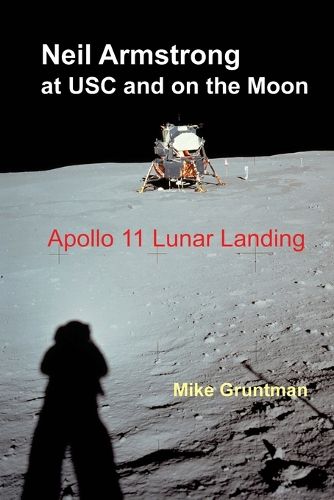Readings Newsletter
Become a Readings Member to make your shopping experience even easier.
Sign in or sign up for free!
You’re not far away from qualifying for FREE standard shipping within Australia
You’ve qualified for FREE standard shipping within Australia
The cart is loading…






About the book
On January 22, 1970, a "distinguished 'member of the student body'" of the School of Engineering of the University of Southern California (USC) gave a one-hour seminar on techniques and procedures of lunar landing. He thus completed the requirements for the Master's degree in aerospace engineering, which was conferred on him after the lecture. The name of the student was Neil A. Armstrong. Six months earlier, he commanded the Apollo 11 lunar mission and became the first man to set foot on the moon.
The story begins with Armstrong's graduate studies at USC in the 1950s. Then, it describes his return to the university campus on that January day in 1970 for the festive dedication of a new science center in the morning.
Next, the book turns its attention to Apollo, a visionary program to land men on the moon that required the concentration of enormous economic, scientific, and technological resources of the country. Numerous technical details show the challenges of developing, designing, and operating the Apollo spacecraft, particularly its Lunar Modules, which landed the astronauts on the lunar surface, as well as training the crews for this task. The recounted complexity of Apollo 11's historic landing in the Sea of Tranquility on the moon puts into perspective this engineering accomplishment. Many quotes give readers a flavor of how participants viewed the events.
Finally, the story returns to Neil Armstrong's visit to USC and his afternoon lecture on the guidance and control of the Lunar Module Eagle during the powered descent and landing on the moon, one of the most challenging elements of the Apollo missions.
About the author
Mike Gruntman is a professor of astronautics and the founder of a space engineering program at the University of Southern California. He is an internationally recognized physicist and engineer actively involved in R&D programs in space science and space technology. Mike has authored and co-authored more than 300 scholarly publications, including seven books. He is an Associate Fellow of the American Institute of Aeronautics and Astronautics and a Member (Academician) of the International Academy of Astronautics.
$9.00 standard shipping within Australia
FREE standard shipping within Australia for orders over $100.00
Express & International shipping calculated at checkout
About the book
On January 22, 1970, a "distinguished 'member of the student body'" of the School of Engineering of the University of Southern California (USC) gave a one-hour seminar on techniques and procedures of lunar landing. He thus completed the requirements for the Master's degree in aerospace engineering, which was conferred on him after the lecture. The name of the student was Neil A. Armstrong. Six months earlier, he commanded the Apollo 11 lunar mission and became the first man to set foot on the moon.
The story begins with Armstrong's graduate studies at USC in the 1950s. Then, it describes his return to the university campus on that January day in 1970 for the festive dedication of a new science center in the morning.
Next, the book turns its attention to Apollo, a visionary program to land men on the moon that required the concentration of enormous economic, scientific, and technological resources of the country. Numerous technical details show the challenges of developing, designing, and operating the Apollo spacecraft, particularly its Lunar Modules, which landed the astronauts on the lunar surface, as well as training the crews for this task. The recounted complexity of Apollo 11's historic landing in the Sea of Tranquility on the moon puts into perspective this engineering accomplishment. Many quotes give readers a flavor of how participants viewed the events.
Finally, the story returns to Neil Armstrong's visit to USC and his afternoon lecture on the guidance and control of the Lunar Module Eagle during the powered descent and landing on the moon, one of the most challenging elements of the Apollo missions.
About the author
Mike Gruntman is a professor of astronautics and the founder of a space engineering program at the University of Southern California. He is an internationally recognized physicist and engineer actively involved in R&D programs in space science and space technology. Mike has authored and co-authored more than 300 scholarly publications, including seven books. He is an Associate Fellow of the American Institute of Aeronautics and Astronautics and a Member (Academician) of the International Academy of Astronautics.